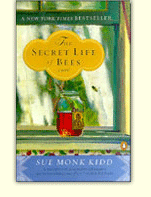>
 You only have to get them done about every 4-6 weeks, with “fills” after about 3 weeks. It’s amazing to watch… they dip a brush into a liquid, then into a powder and apply it on you natural nail, then it hardens like acrylics, only looks and feels natural. No polish is needed on top, and they don’t chip or break. I’m loving mine, which I just had done on Thursday.
You only have to get them done about every 4-6 weeks, with “fills” after about 3 weeks. It’s amazing to watch… they dip a brush into a liquid, then into a powder and apply it on you natural nail, then it hardens like acrylics, only looks and feels natural. No polish is needed on top, and they don’t chip or break. I’m loving mine, which I just had done on Thursday.
While I was there, I got a pedicure, and asked if they had the brown color I’ve been using,  Essie’s “Lady Godiva” (Isn’t their ad campaign delicious? I’m such a visual shopper!) But the problem with Essie is it doesn’t stay on as long, and it thickens and get “gumpy.”
Essie’s “Lady Godiva” (Isn’t their ad campaign delicious? I’m such a visual shopper!) But the problem with Essie is it doesn’t stay on as long, and it thickens and get “gumpy.”
 So instead I discovered OPI’s color, Suzi Says Da! from the Fall/Winter 2007 “Russian” collection. I love it! (I’ll miss having it on my fingernails, but the Solar nails are maintenance-free, so I’ll settle for brown toenails for now.)
So instead I discovered OPI’s color, Suzi Says Da! from the Fall/Winter 2007 “Russian” collection. I love it! (I’ll miss having it on my fingernails, but the Solar nails are maintenance-free, so I’ll settle for brown toenails for now.)
 Let me say first off that I’ve read every book Sue Monk Kidd has ever written, and I really hope she’s proud of this movie—I thought it was amazing. I wept (almost loudly) as I felt Lily’s pain and even louder as she opened her heart to accept her father’s pain.
Let me say first off that I’ve read every book Sue Monk Kidd has ever written, and I really hope she’s proud of this movie—I thought it was amazing. I wept (almost loudly) as I felt Lily’s pain and even louder as she opened her heart to accept her father’s pain.
 It was as if Kidd, through her character, Lily, was reminding us that none of us is completely evil or completely good… not even her father. Solsenitzen told us in The Gulag Archipelago that “the dividing line between good and evil is in every human heart.” This book, and movie, did a superb job of showing us that.
It was as if Kidd, through her character, Lily, was reminding us that none of us is completely evil or completely good… not even her father. Solsenitzen told us in The Gulag Archipelago that “the dividing line between good and evil is in every human heart.” This book, and movie, did a superb job of showing us that.
It was also beautifully acted and the cinematography was outstanding. I could feel the fog on my skin as Lily walked through the swamp, and the vibration of the bees in the honeycombs. Kudos to Dakota Fanning, Queen Latifa and the entire cast.
3. In yesterdays’s New York Times Magazine’s “Lives” Column, I discovered an article that beat out my piece, “The Other Woman,” which I submitted there, before expanding it to full article length and submitting it to Mom Writers Literary Magazine. The essay in the New York Times Magazine is called “Meet the Parents.” It’s also about a Korean adoptee’s search for his birth mother, but with a different ending. And it turns out the author, William Georgiades has had several articles published by the NYT in the past so I guess once you’re in your’re in. He’s also had a number of articles published in the LA Times. It’s starting to sound like a men’s club, but I’m not giving up!
4. Finally, the November issue of Redbook Magazine (another publication that rejected my  article, “The Other Woman,” has a wonderful piece by a woman advocating for her mother-in-law’s rights at a nursing home. It’s called “Fighting for Lisa,” and you can read it (it’s very short) here. It was just what I needed to read right now, for two reasons: I’m learning to be my own mother’s advocate as I fight for the best care for her, and it encouraged me to continue to write about her story, whether or not I try to publish it apart from this blog. Writing it also gives me strength, just as caring for her mother-in-law gave Marina Budhos “exhilarating strength.” Kudos to you, Marina, for caring, and for writing.
article, “The Other Woman,” has a wonderful piece by a woman advocating for her mother-in-law’s rights at a nursing home. It’s called “Fighting for Lisa,” and you can read it (it’s very short) here. It was just what I needed to read right now, for two reasons: I’m learning to be my own mother’s advocate as I fight for the best care for her, and it encouraged me to continue to write about her story, whether or not I try to publish it apart from this blog. Writing it also gives me strength, just as caring for her mother-in-law gave Marina Budhos “exhilarating strength.” Kudos to you, Marina, for caring, and for writing.